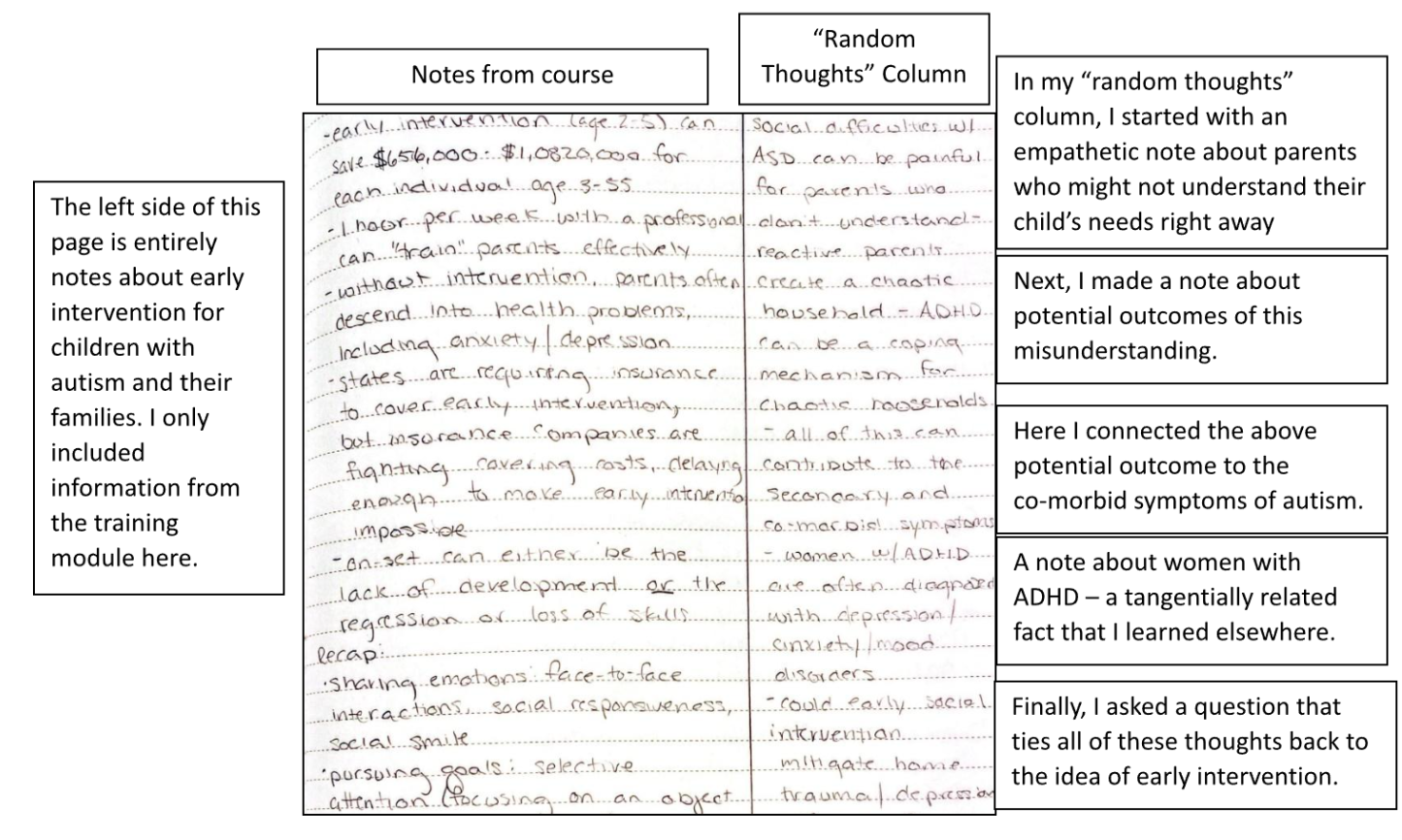As a tutor with ADHD, I sympathize with the students that I meet who struggle with studying, test taking, organization, etc. I struggled with some of these same issues in high school and college: tips that my teachers recommended never seemed to work, I struggled to focus, and sometimes I just couldn’t start a task.
I wasn’t diagnosed with ADHD until after college, so I didn’t have much guidance in figuring out how to be an effective student – I figured out a lot of my study habits on my own through trial and error. Now, as I am pursuing certifications to coach students with cognitive disorders like ADHD, I am paying very close to my study habits and analyzing how I’ve adapted other study techniques to meet my needs.
As I am adjusting and using my study methods more mindfully, I want to share how I adjust my studying. These suggestions are not exclusively for students with ADHD – anyone can benefit from these tips if they feel good to you!
Since I have a lot of study tips, I plan to write several blog posts to cover them all, so look out for my Study Tips series in the future! But for now, I’ll start with a couple of tips. Quick disclaimer: these tips may not work for everyone, or they may need to be modified for you. It’s important to remember that a tutor or coach who specializes in learning differences can help determine the best study methods for you specifically.
1: Movement Breaks
I’ve heard a lot of different ideas about movement with ADHD students: it’s hard to get them to sit still, you need to limit their movement so they don’t get distracted, etc. However, in my personal experience, trying to stop movement isn’t very effective. This may not be true for everyone, but this is what typically happens for me:
I’m thinking about my work, but then I try to stop moving. I spend so much energy focusing on not moving that I accidentally stop thinking about my work, and then I’m completely sidetracked. Instead, I try to work movement into my studying – sometimes I take a movement break, but mostly I move passively while I’m focusing.
If I really need a break from studying, I will get up and walk around, dance to a song, stretch, or lay on the floor for a minute. I often set a timer on my phone before I do this to make sure I come back to my work in a few minutes.
More often, though, I move passively while I’m studying – I’m not really thinking about moving, but I do realize that I’m doing it. I often switch seating positions while I study: I’ll sit multiple ways in the chair, sit on the floor for a little bit, stand up for a bit, then maybe sit back down. Sometimes, I will study notecards while standing on a balance board or walking around.
The organization Children and Adults with Attention-Deficit/Hyperactivity Disorder (CHADD) conducted this study to see how movement affects students with ADHD while they are focusing. The study found that students with ADHD focused better when they were moving more. Their conclusion is that movement may help make up for under-active parts of the brain, allowing the brain to be more engaged overall.
2: Random Thoughts Column in Notes
This might be one of my favorite study tips – this can work for anyone, ADHD or otherwise. When I’m studying or taking notes, I often have a lot of distracting thoughts that are tangentially related to the material. Sometimes I’m connecting the topic to other topics or classes, books I’ve read, or random ideas I come up with. Ignoring these thoughts can take a lot of effort and detract my energy from studying (like how thinking about not moving distracts me, thinking about not getting distracted also distracts me).
So, I often keep a column on the side of my page so I can write down my thoughts. It feels better to me to acknowledge the thoughts than it does to ignore them. This way, instead of being distracted by my thoughts, I can come back to them later. I like to keep these thoughts separated from my notes (so I know what is officially class-related and what is mine), so the column helps me organize. Below is an example of a “random thoughts” column from a recent training course I completed.

As you can see, my “random thoughts” column isn’t very random – it often contains some nice connections that I enjoy thinking about. These thoughts can be valuable, too! I’ve found many project and paper ideas in my “random thoughts” columns – it’s where my more creative ideas tend to be. This Scientific American article has a nice explanation of how creativity and ADHD go hand in hand. Don’t stifle your creative thoughts – give them a column of their own!
I’m really looking forward to writing more of my study tips! If you have any questions or if you have other study tips that have worked well for you, feel free to email me at jamie@mindfish.com. I’m always happy to hear from students or their parents and swap strategies for academic success.
Other posts from Jamie’s study tips:
Study Tips from a Tutor with ADHD – Part 2
Test Prep for Students with ADHD and Students with Autism – Part 3
Interested in learning more about Test Prep at Mindfish?
Contact us today to find out what our dedicated tutors can help you achieve.





